
In biology, the nervous system is the highly complex part of an animal that coordinates its actions and sensory information by transmitting signals to and from different parts of its body. The nervous system detects environmental changes that impact the body, then works in tandem with the endocrine system to respond to such events. Nervous tissue first arose in wormlike organisms about 550 to 600 million years ago. In vertebrates it consists of two main parts, the central nervous system (CNS) and the peripheral nervous system (PNS). The CNS consists of the brain and spinal cord. The PNS consists mainly of nerves, which are enclosed bundles of the long fibers or axons, that connect the CNS to every other part of the body. Nerves that transmit signals from the brain are called motor nerves or efferent nerves, while those nerves that transmit information from the body to the CNS are called sensory nerves or afferent. Spinal nerves are mixed nerves that serve both functions. The PNS is divided into three separate subsystems, the somatic, autonomic, and enteric nervous systems. Somatic nerves mediate voluntary movement. The autonomic nervous system is further subdivided into the sympathetic and the parasympathetic nervous systems. The sympathetic nervous system is activated in cases of emergencies to mobilize energy, while the parasympathetic nervous system is activated when organisms are in a relaxed state. The enteric nervous system functions to control the gastrointestinal system. Both autonomic and enteric nervous systems function involuntarily. Nerves that exit from the cranium are called cranial nerves while those exiting from the spinal cord are called spinal nerves.
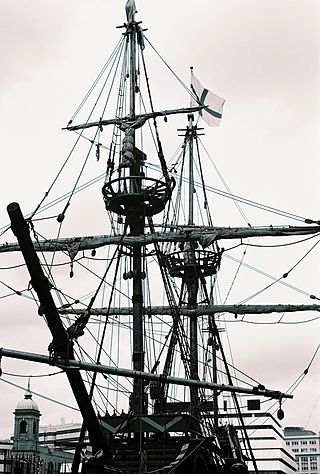
Rigging comprises the system of ropes, cables and chains, which support a sailing ship or sail boat's masts—standing rigging, including shrouds and stays—and which adjust the position of the vessel's sails and spars to which they are attached—the running rigging, including halyards, braces, sheets and vangs.

Viticulture or winegrowing is the cultivation and harvesting of grapes. It is a branch of the science of horticulture. While the native territory of Vitis vinifera, the common grape vine, ranges from Western Europe to the Persian shores of the Caspian Sea, the vine has demonstrated high levels of adaptability to new environments, hence viticulture can be found on every continent except Antarctica.
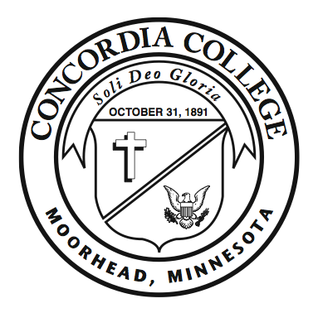
Concordia College is a private liberal arts college in Moorhead, Minnesota. Founded by Norwegian settlers in 1891, the school is associated with the Evangelical Lutheran Church in America. Concordia is accredited by the Higher Learning Commission and has a total student enrollment of 2,531. It offers Bachelor of Arts, Bachelor of Music, Master of Education, and Master of Science in nutrition degrees.

Celtic field is an old name for traces of early (prehistoric) agricultural field systems found in North-West Europe, i.e. Britain, Ireland, Belgium, Netherlands, Germany, Denmark, France, Sweden, Poland and the Baltic states. The fields themselves are not related to the Celtic culture.

The mast of a sailing vessel is a tall spar, or arrangement of spars, erected more or less vertically on the centre-line of a ship or boat. Its purposes include carrying sails, spars, and derricks, giving necessary height to a navigation light, look-out position, signal yard, control position, radio aerial or signal lamp. Large ships have several masts, with the size and configuration depending on the style of ship. Nearly all sailing masts are guyed.

Ridge and furrow is an archaeological pattern of ridges and troughs created by a system of ploughing used in Europe during the Middle Ages, typical of the open-field system. It is also known as rigand furrow, mostly in the North East of England and in Scotland.

Run rig, or runrig, also known as rig-a-rendal, was a system of land tenure practised in Scotland, particularly in the Highlands and Islands. It was used on open fields for arable farming.

Lazy bed is a traditional method of arable cultivation. Rather like cord rig cultivation, parallel banks of ridge and furrow are dug by spade although lazy beds have banks that are bigger, up to 2.5 metres in width, with narrow drainage channels between them. It was used in southern parts of Britain from the post-Roman period until the post-medieval period, and across much of Ireland and Scotland until the 19th century.
The Ypres Salient, around Ypres, in Belgium, was the scene of several battles and a major part of the Western Front during World War I.

A Prusik is a friction hitch or knot used to attach a loop of cord around a rope, applied in climbing, canyoneering, mountaineering, caving, rope rescue, ziplining, and by arborists. The term Prusik is a name for both the loops of cord used to tie the hitch and the hitch itself, and the verb is "to prusik". More casually, the term is used for any friction hitch or device that can grab a rope. Due to the pronunciation, the word is often misspelled Prussik, Prussick, or Prussic.
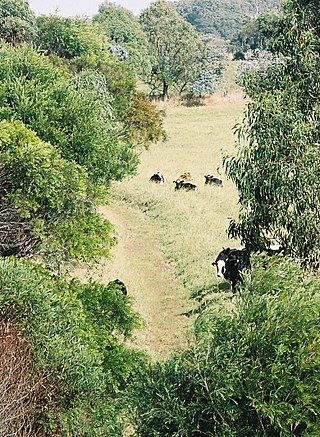
Keyline design is a landscaping technique of maximizing the beneficial use of the water resources of a tract of land. The "keyline" is a specific topographic feature related to the natural flow of water on the tract. Keyline design is a system of principles and techniques of developing rural and urban landscapes to optimize use of their water resources.

A nuchal cord is when the umbilical cord becomes wrapped around the fetus's neck. Symptoms present in the baby shortly after birth from a prior nuchal cord may include duskiness of face, facial petechia, and bleeding in the whites of the eye. Complications can include meconium, respiratory distress, anemia, and stillbirth. Multiple wraps are associated with greater risk.
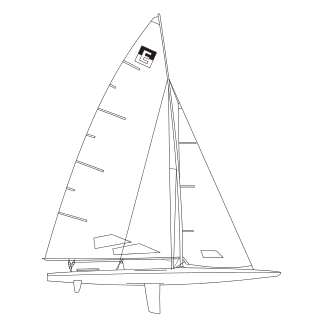
The E Scow is an American sailing dinghy that was designed by Arnold Meyer Sr as a one-design racer and first built in 1924.
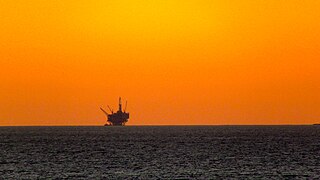
Offshore drilling is a mechanical process where a wellbore is drilled below the seabed. It is typically carried out in order to explore for and subsequently extract petroleum that lies in rock formations beneath the seabed. Most commonly, the term is used to describe drilling activities on the continental shelf, though the term can also be applied to drilling in lakes, inshore waters and inland seas.

Transcription factor MafB also known as V-maf musculoaponeurotic fibrosarcoma oncogene homolog B is a protein that in humans is encoded by the MAFB gene. This gene maps to chromosome 20q11.2-q13.1, consists of a single exon and spans around 3 kb.
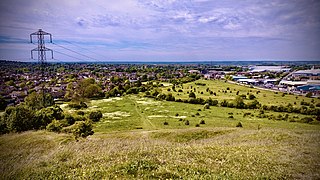
Blow's Down is a 33.1-hectare (82-acre) biological Site of Special Scientific Interest in Dunstable in Bedfordshire. It was notified in 1989 under Section 28 of the Wildlife and Countryside Act 1981, and the local planning authority is Central Bedfordshire Council. The site forms around half of the 62.3-hectare (154-acre) Blow's Downs nature reserve, which is managed by the Wildlife Trust for Bedfordshire, Cambridgeshire and Northamptonshire. It has a maximum elevation of 212 m.

Atherosperma moschatum, the southern sassafras or blackheart sassafras, is an evergreen tree native to the cool temperate rainforests of Tasmania, Victoria, and New South Wales in Australia. It is common in the rainforests of Tasmania and Victoria, but more scattered and rare in the higher altitudes of eastern New South Wales. The northernmost area is at Mount Grundy, west of Port Macquarie.

Agriculture in prehistoric Scotland includes all forms of farm production in the modern boundaries of Scotland before the beginning of the early historic era. Scotland has between a fifth and a sixth of the arable or good pastoral land of England and Wales, mostly in the south and east. Heavy rainfall encouraged the spread of acidic blanket peat bog, which with wind and salt spray, made most of the western islands treeless. Hills, mountains, quicksands and marshes made internal communication and agriculture difficult.

The 2023 Ohio State Buckeyes football team is an American football team that represents the Ohio State University as a member of the East Division of the Big Ten Conference during the 2023 NCAA Division I FBS football season. The team is coached by Ryan Day in his fifth season as Ohio State's head coach. The Buckeyes play their home games at Ohio Stadium in Columbus, Ohio. It will be the Buckeyes' 134th season overall and 111th as a member of the Big Ten.



















